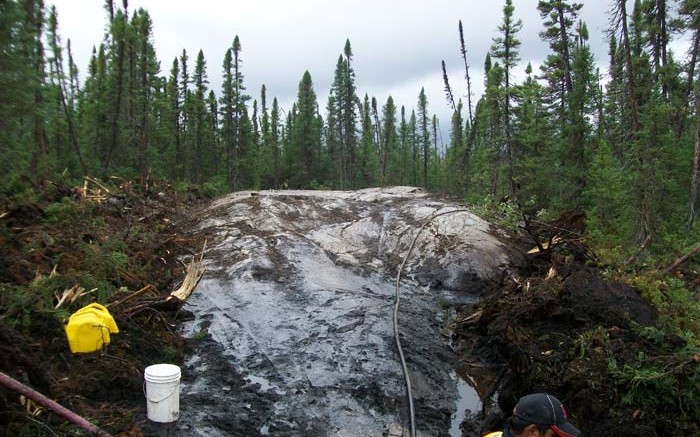VANCOUVER — The Ontario government is offering up $1 billion to build a transportation corridor into the Ring of Fire camp in remote northern Ontario, and the funds are the latest in a series of government moves to restore interest in an area that, despite its name, had lost its spark.
When Cliffs Natural Resources suspended its Chromite project in November, the dark clouds developing over the once highly touted Ring of Fire settled in for what looked like a long stay.
The discovery of chromite and other base-metal deposits in the area in 2008 stoked a frenzy of excitement, with companies and politicians extolling the area’s potential to generate thousands of jobs and billions of dollars in economic activity. The area was soon found to host the largest known chromite deposit in North America, which Cliffs wanted to turn into a large open-pit mine.
But the Ring of Fire is 500 km northeast of the nearest sizable city Thunder Bay, and the closest road is more than 300 km away.
A staking rush meant there were dozens of players in the area, ranging from giant Cliffs to tiny speculators,. The messy patchwork of properties soon led to disputes, such as Cliffs taking KWG Resources to court over a purported right to run a road across KWG’s land. There are nine First Nations communities in the area to consult, and the provincial and federal governments chided one another for not stepping up with substantial infrastructure funding.
The ferrochrome price didn’t cooperate, either. The mine Cliffs outlined in its 2011 study needed a US$1.40 per lb. ferrochrome price for a decent return. At press time the steelmaking material was worth less than US$1 per lb.
By late 2013 Cliffs’ market capitalization had shrunk to just $4 billion, compared to $15 billion in 2011, when it was so keen to develop Chromite. And capital costs to build a mine and supporting infrastructure at Chromite were estimated at $3.3 billion.
In November 2013 Cliffs shelved the project, marking the end of the Ring of Fire’s first boom–bust cycle.
But the Ring’s situation had been going south for a while.
Noront Resources’ Eagle’s Nest nickel-copper-PGM massive sulphide project is the second-most advanced project in the area after Cliffs’ Chromite — though it could be in production sooner because it’s much smaller and doesn’t involve finicky chromite marklets — and Noront’s share price illustrates the area’s trajectory. It spiked to $7 in 2008, but was worth just 16¢ when Cliffs withdrew.
In the last four months, however, Noront shares have staged a comeback, climbing 306% from that late 2013 low to hit 65¢ on April 28, on a string of positive news in the region.
It seems the Ring of Fire is heating up again — and the Ontario government deserves much of the credit.
Shortly after Cliffs announced its departure, the province countered by creating a corporation that would champion strategic infrastructure development for the Ring of Fire. Mining companies, First Nations and government all have different ideas and needs around infrastructure, so a united approach is needed.
In March the government signed a regional framework agreement with the nine local First Nations on resource development. A framework agreement is just the beginning, but a start is better than nothing.
The late April, news of provincial willingness to provide $1 billion in funding for a road and power corridor into the region marks a “Triple Crown” of derisking achievements by the Ontario government since Cliffs pulled out.
“Our government is committed to making a significant investment to fund transportation infrastructure development in the Ring of Fire,” said Michael Gravelle, Ontario’s minister of Northern Development and Mines. “We have made progress over the past few months to bring partners and divergent interests together. Now we need the federal government to match this commitment so that we can move forward on realizing the Ring of Fire’s potential.”
Ontario’s government wants Ottawa to follow its lead and announce a similar commitment. A billion dollars from each government would almost be enough to build industrial and community transportation and power infrastructure, for which costs are estimated at $2.25 billion. However, the province says it is committed to the investment whether or not the federal government comes to the table.
Noront president and CEO Alan Coutts said in a release that the infrastructure-funding announcement is a “milestone that will improve the quality of life in remote communities, while enabling development and prosperity in Northern Ontario.” He added that “mining and the associated job creation can’t happen without infrastructure, so we are pleased to see the province make a public commitment to funding a transportation corridor in the Ring of Fire.”
Noront’s share price jumped 10¢ on the news to reach 65¢, a level it has not seen in almost two years.


Be the first to comment on "Ontario gov’t reignites Ring of Fire with $1B pledge, First Nations agreements"